Moroccan cuisine, with its complex flavour pairings of sweet, briny and salty, dried fruit with olives and lemons, with its bright spice blends like harissa and ras-el-hanout, is amongst my most favourite cuisines!
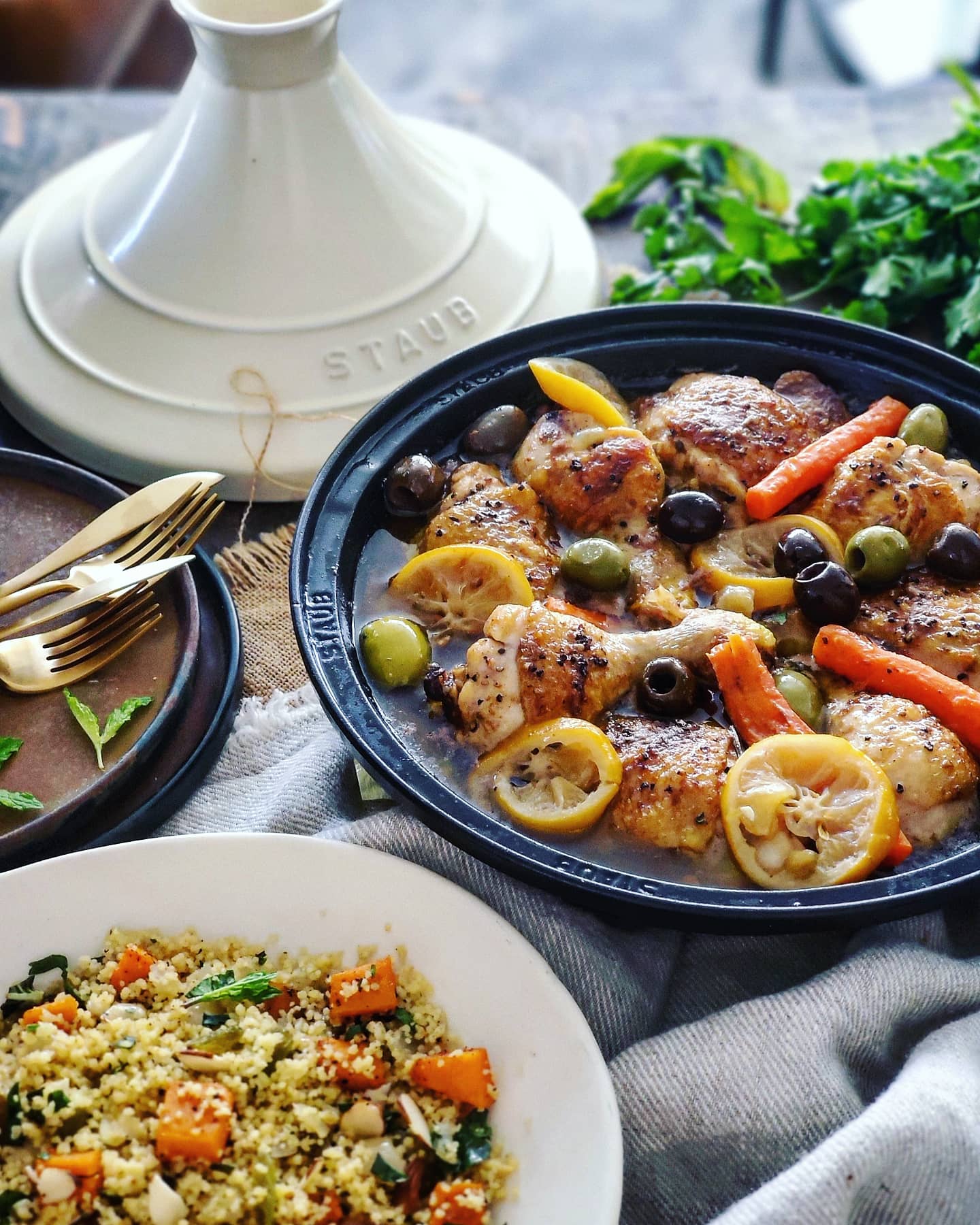 So it was a no-brainer as I looked through Anna Francese Gass’ new book Heirloom Kitchen, that I would zero on a Moroccan Chicken Tagine as the first recipe to try out.
So it was a no-brainer as I looked through Anna Francese Gass’ new book Heirloom Kitchen, that I would zero on a Moroccan Chicken Tagine as the first recipe to try out.
Tapping into the Generations
Actually, this entire book of recipes and anecdotes is one that I can hold dear to my heart. Not because I have tried most of the recipes (I’ve only tried one so far!) or because it has stunning photography and heartwarming writing ( it has oodles of both). No, the reason this book sings to me, is because of the motivation that Anna had for starting this labour of love. She grew up in the bustling, traditional home on Rhode Island of her Italian immigrant parents. Her mom cooked the traditional Italian meals that she learned to make growing up in Italy for the family. I can totally relate to Anna’s childhood. Not that my parents are Italian, but my German immigrant parents made sure the German roots and traditions stayed strong while we grew up in suburban Ontario, Canada. Like Anna, we grew up eating the dishes that my parents grew up on. And like Anna, when we started asking our mom to make ‘Canadian food’, our mom struggled, but eventually learned to conquer and succeed in making the pastas, burgers and casseroles that our friends were eating. But in the end, we came to realize that those German meals that my mom was known for, were the true stars of the kitchen, and we grew to appreciate what at first we had taken for granted.
Like Anna, I realized that to keep my mom’s recipes alive, I would have to shadow her as she taught me all of those recipes that I had earlier dismissed. I would have to do this quickly since we would soon lose her to cancer. None of the recipes were written down, so it was truly a shadow game as she taught from the stove, and I wrote furiously away in notebooks. Anna undertook this same labour of love to ensure that her heritage would remain alive for future generations.
And like Anna, I learned to value the cuisines of the cultures around me. And the best way to learn those recipes, is at the side of the moms and grandmas, the nonnas and omas of friends and neighbours. Living in such a diverse city as Toronto, I have had so many opportunities to learn right from the ones who brought their recipes over to North America with them. In part, many of the recipes on this blog are the result of those chats and afternoons spent with enthusiastic ladies. Anna decided that her mom’s legacy should not be the only one applauded. So she spent years working on the ‘Nonna Project’, approaching friends for access to their moms and grandmas to learn their ways. And this book is the culmination of all her hard work, and really lives up to the title ‘Heirloom Kitchen’. Along with the recipes, Anna shares with us a glimpse into the women and the journey that they took, to bring those recipes to us. So her book and my blog have a little bit in common. The fact that she has graciously asked me to cook from her book makes my cooking heart leap. We would have great fun comparing recipes and stories!
Anna’s Book
What I love about this book, is that there is truly something for everyone. Whether you are curious about the cuisines of Africa, the Middle East, Asian lands, Eastern and Northern Europe, or Caribbean and the Americas, you will get a wonderful look into those worlds. There are sweets, appetizers, special occasion meals, and comforting casseroles to keep you cozy on a winter’s eve. I have marked so many recipes to try. Anna’s mom’s Arancini, Brazilian Brigadiero, Korean Japchae, Filipino Pancit, Iranian Tahdig, and so many others. Thank you Anna for this superb collection of recipes!
Today’s recipe came from Safoi Babana-Hampton, who grew up in Rabat, Morocco. While she came to America to study, Michigan is now home, and she is ensuring that her children learn to celebrate their Moroccan heritage, cooking being a vital way to do this.
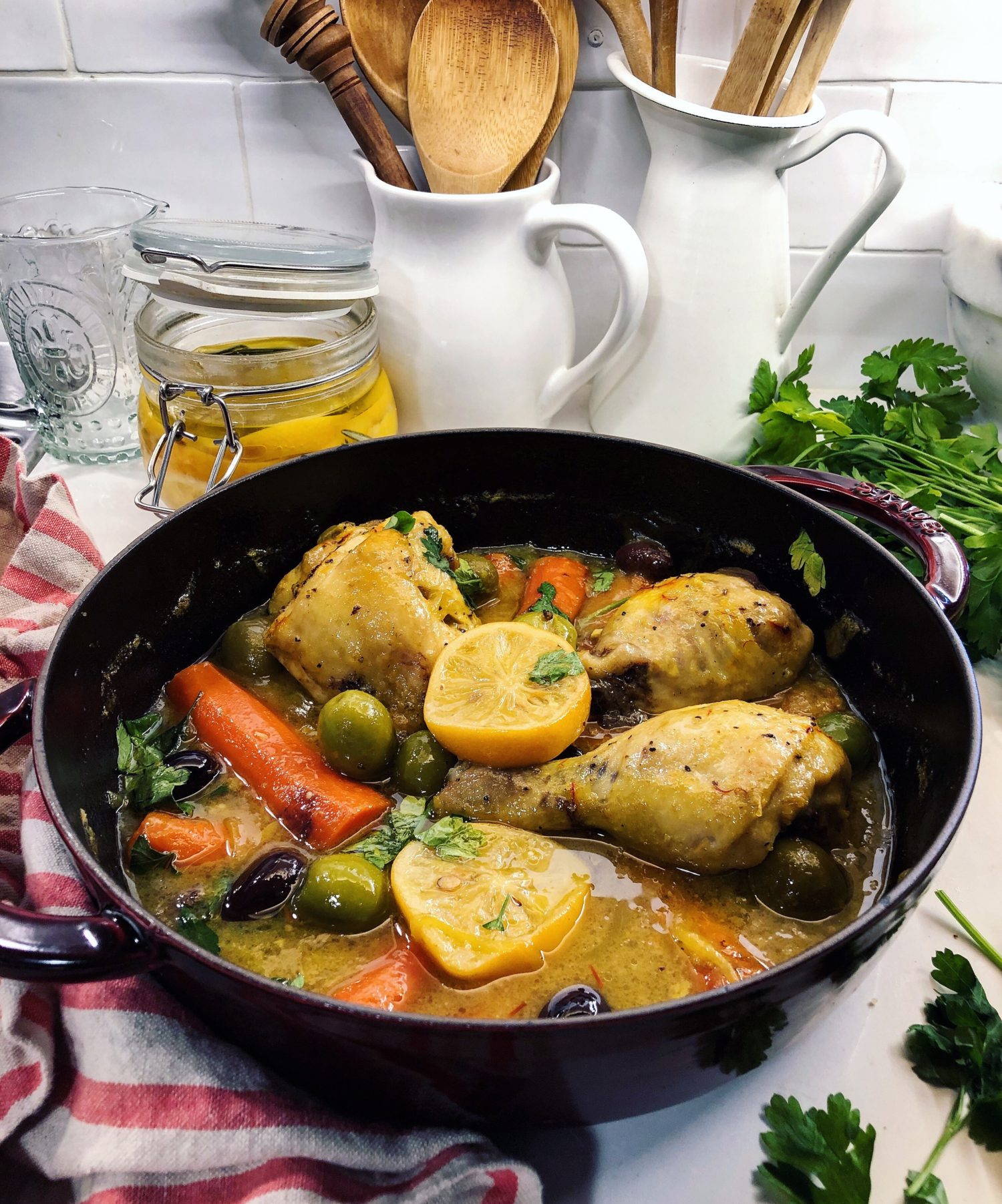 What really is a Tagine?
What really is a Tagine?
I followed Safoi’s recipe to the letter, except for a few key changes that I had to make. Background: Tagine can refer the the clay pot with a domed lid, or it can refer to the stew cooked in it. Her recipe is definitely designed to cook up in a clay tagine. Clay tagines are porous, the wide shallow base holding the meats or veggies and liquids, and the clay domed lid which allows the steam to rise and return back down onto the ingredients so that the condensation can braise everything evenly. If cooking with clay, you will need more liquid, since the clay will actually absorb some of it, as well as allow some to evaporate through a small hole a the top of the lid. Most of us don’t have one of these pots. If you have a cast iron dutch oven, or braiser (again, a wide, shallow vessel with a tight lid, designed fo allow everything to braise evenly) or even a very large deep skillet with a lid, you can easily replicate this recipe. If you have a cast iron tagine that’s wonderful as well. However, you will not need the amount of liquid that the recipe originally calls for. I am giving you room to work with the amount of water in the recipe below. The tagines where the top and bottom are fully glazed ceramic or clay, and are highly decorated with hand-painting, are purely for serving. These ones should never be used for actual cooking.
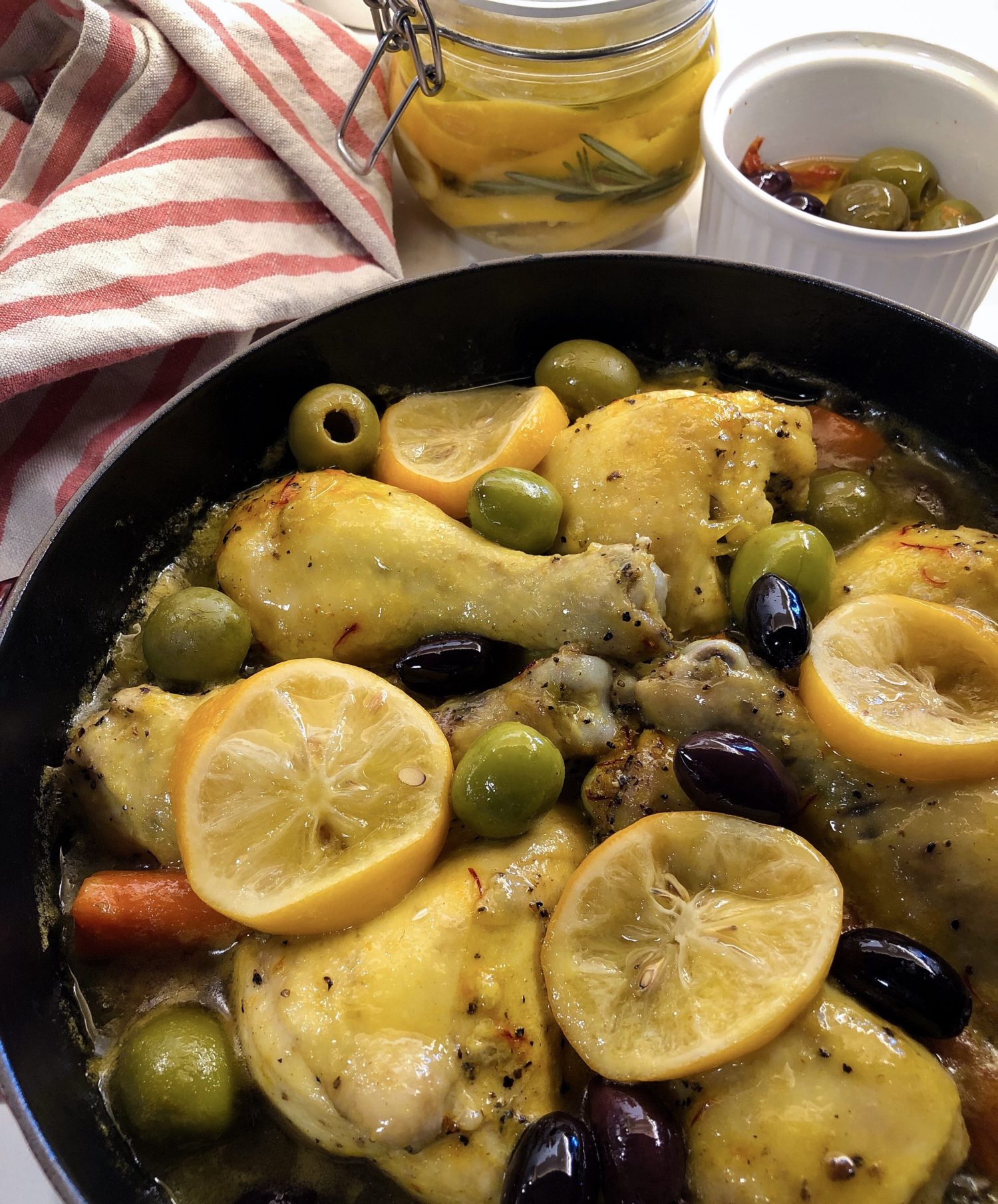

Second change:
After making this recipe, there is one thing I would do differently. I usually sear my meats before braising them in some fashion. This is because they will not take on any colour once they are surrounded by stock or water, and the lid in put on the pot. This recipe does not call for searing first. I can understand why, since the chicken had been marinating in a combo of oils, ginger, pepper and saffron threads. I wouldn’t want the saffron threads to scorch onto the skin if I seared the chicken pieces first. (if there was no saffron in the marinade, I would have quickly seared the chicken pieces separately before continuing with the recipe) So, I would suggest, once the dish is finished cooking, that you remove the chicken pieces to a baking sheet, place it onto a rack set in the upper third of the oven, and give them a quick broil. Watch them. This is not for cooking, only for colour and presentation, if this concerns you. If it doesn’t, then just serve as is. I can attest that the chicken tastes amazing as it is. I basted them periodically in the second half of the cooking time with the liquid in the pot. The saffron in the braising liquid gives the skins a lovely golden hue. We were good with this. But if you want a quick bit of colour, I will totally support you! This step will be included in the recipe below as well. *I have amended this recommendation in the post script below.
The ease of making this dish is only surpassed by the fact that the ingredients are not hard to find at all. Chicken, carrots, onions, olive oil and canola oil, pepper, ground ginger and saffron. The saffron really makes this dish so fragrant, as I mentioned above, and creates a brilliant colour.
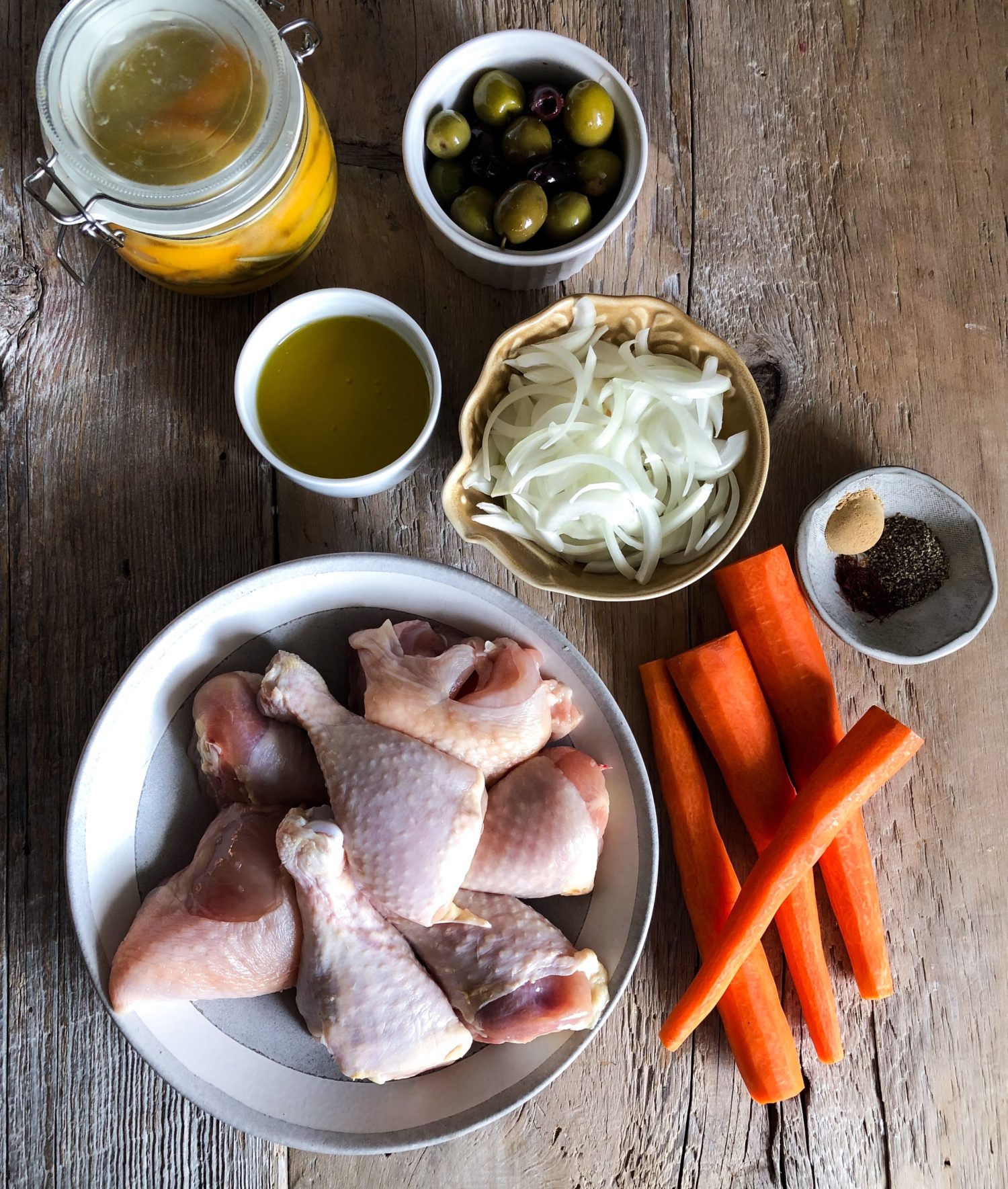
My favourite part of this recipe is the use of preserved lemons and olives. They are such a fabulous contrast to the sweetness of the carrots, and this sweet/briny combination is what Moroccan cuisine does so well. I’m sharing the link to the best preserved lemon recipe I’ve ever found. So easy, and they store forever in the fridge!! You can find them in my Lemon Prep post.
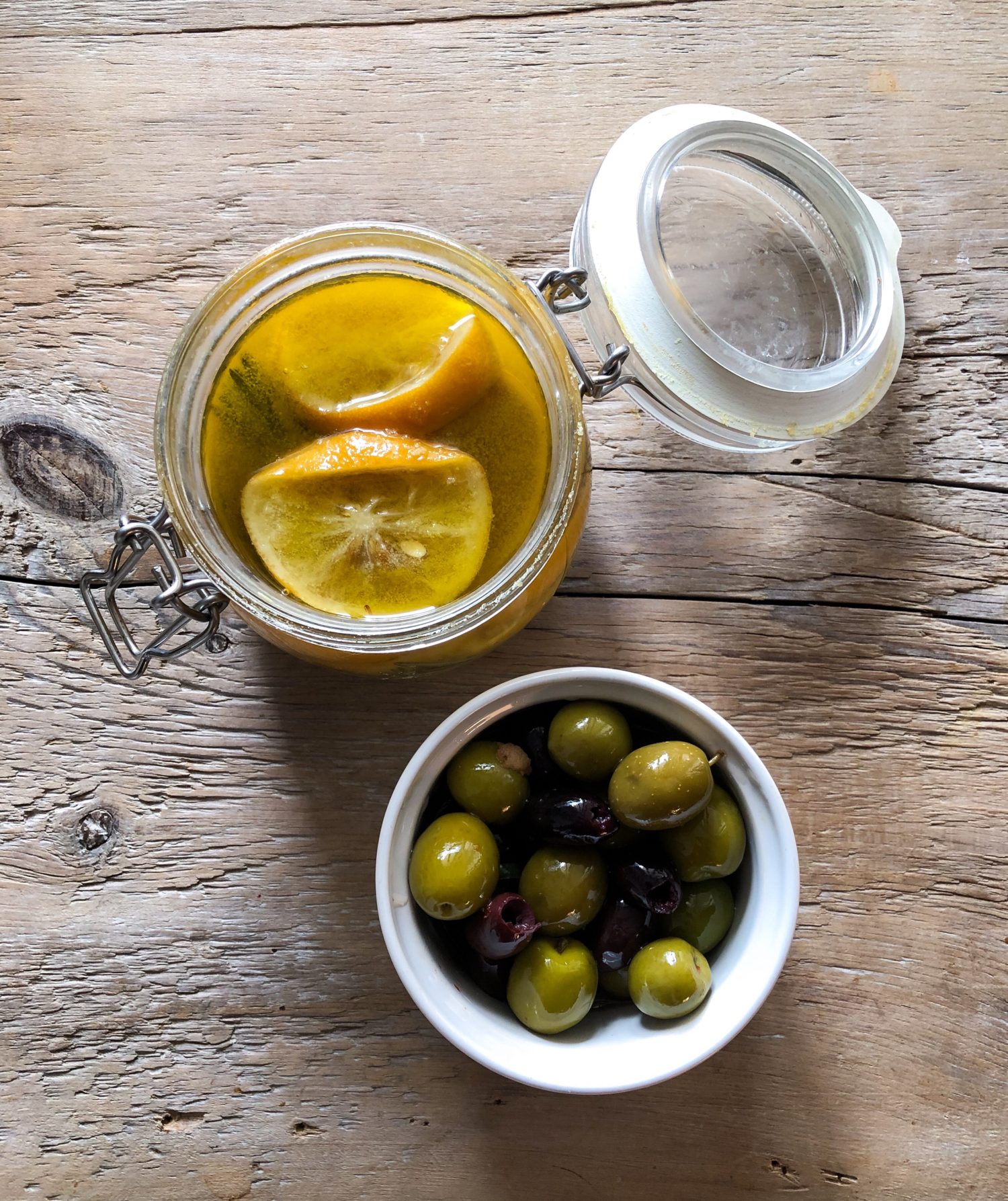
How to Stack a Classic Meat Tagine
I’m also going to show you how to stack veggies and meat, as per using a traditional tagine pot. Usually onions are placed at the bottom. Then the veggies are layered, firmest veggies first, arranged in a circle pattern. And creating a dome of sorts. If you are using beef or lamb, it would have gone below the veggies, in the same pattern. Here the chicken is also laid out in the same pattern on top of the carrots. This is to mimic the domed lid of the tagine. But it will work great in any pot you are using. This makes for a gorgeous presentation if you are serving right from the pot or tagine.
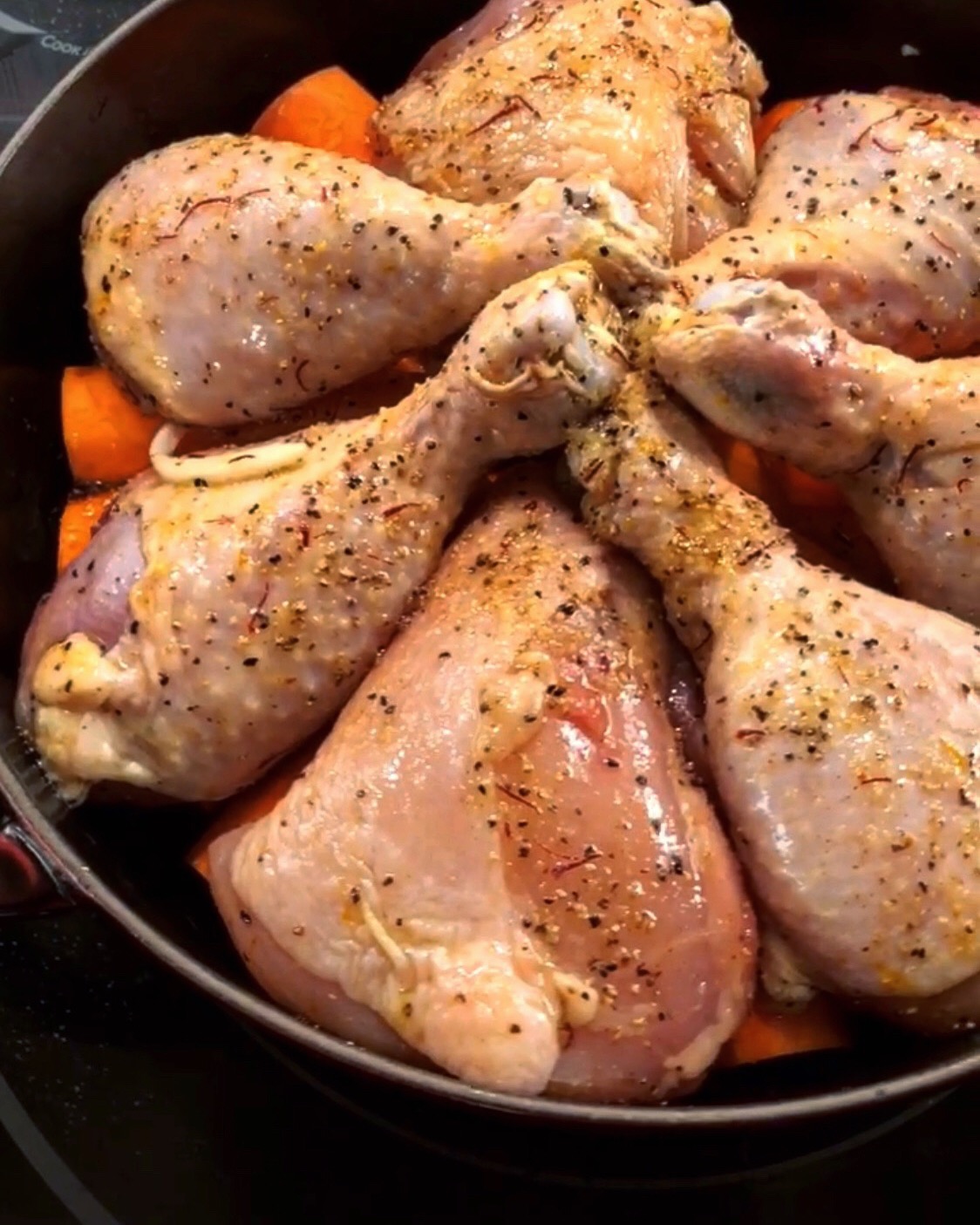
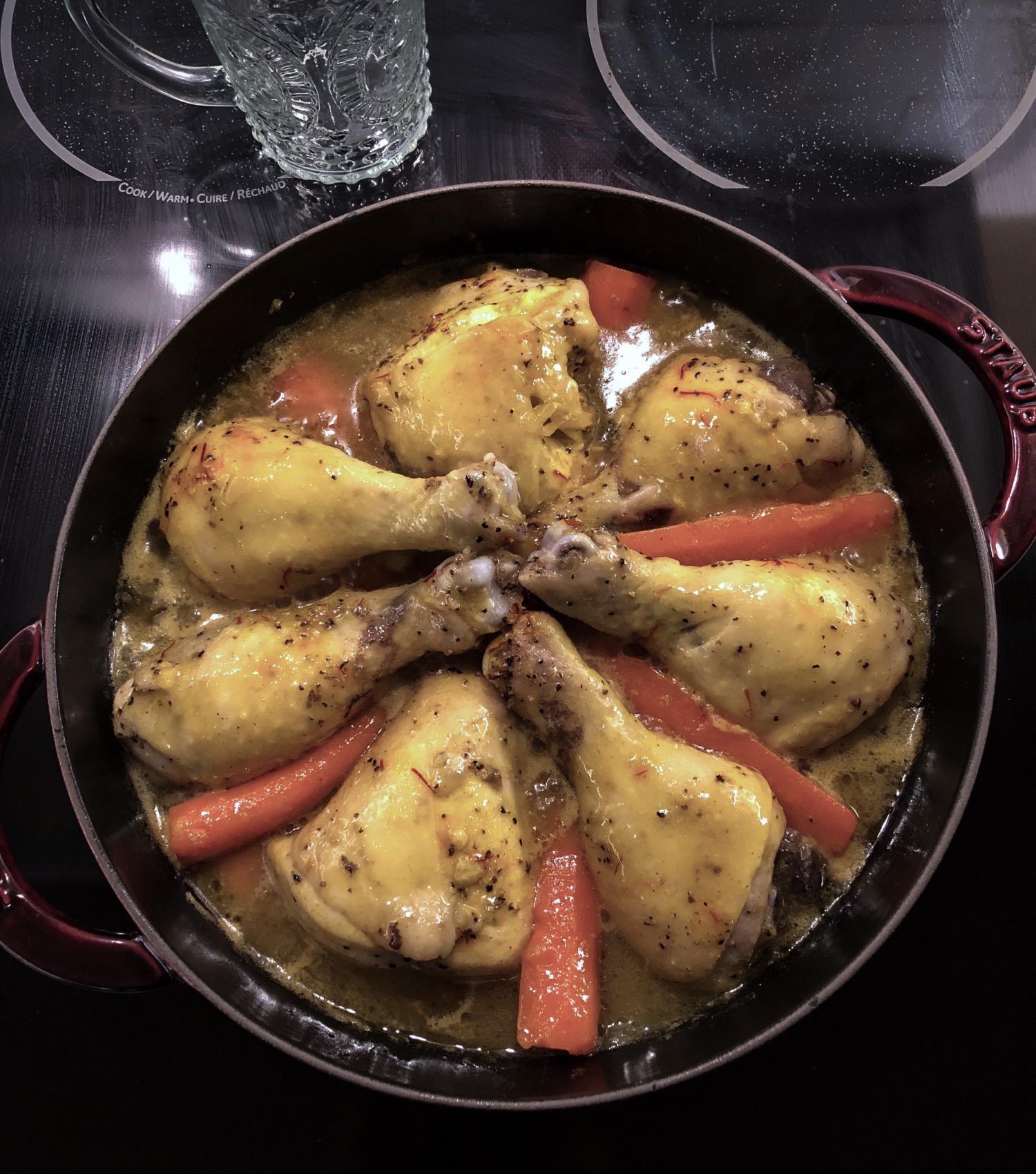
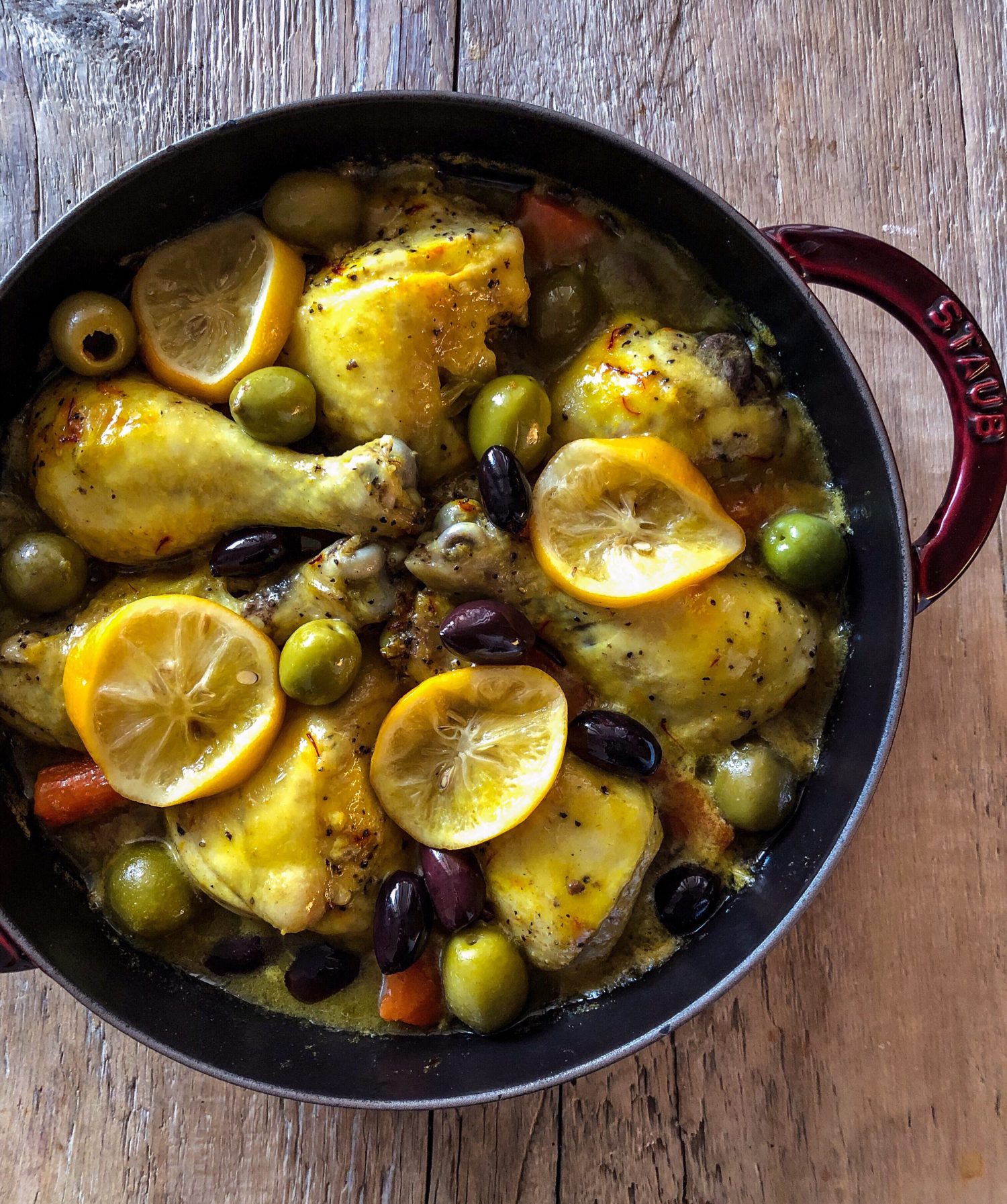
Because this dish is basically a braised stew, it will always turn out perfect. I mentioned that this is such an easy dish to prepare. Once all the ingredients are in the pot, the low heat and liquid will do all the work. And your kitchen will smell amazing and slightly exotic! The meat will fall off the bone, it will be tender and never dried out. It’s a perfect way to use thighs or tougher cuts as well. Always use meat on the bone- there is more flavour this way! The carrots are so perfect, soft and sweet. The onions melt into the liquid that has combined with the chicken juices, and creates a fabulous sauce to pour over everything. This is total comfort food! This is as welcome on a cold winter’s weekday eve as a on a Spring weekend. Serve it sprinkled with heaps of freshly chopped parsley or cilantro, accompanied by some couscous cooked in stock with ras-el-hanout and fresh mint, and this is a meal fit for the most festive dinner party. I hope you add this chicken tagine to your repertoire. You will make a lot of bellies really happy! Another option for the couscous side can be found in with my Persian Fessenjan, Chicken and Walnut Stew, it’s a cauliflower couscous base. You can still add all the goodies to it!
Love Jen
Updates
April 10, 2020: The next time I made this dish, I actually amended the method: I patted dry the chicken, and then seared the pieces first. I then put them into the marinade as the recipe outlines and proceeded with the rest of the recipe. This saved having to broil them afterwards to get some colour. I also adjusted the original recipe by removing a lot of the oil in the original recipe. It had called for 2/3 cup of oil: olive and canola. I reduced the oil to 1/4 cup of olive oil, and changed the rest of the liquid to chicken stock. The flavours are still there, but with a lot less fat! Searing the meat first also reduces the cooking time in the pot. You should be able to eat this 45 minutes after starting with the onions in the pot!


Moroccan Chicken Tagine
The most succulent tender chicken dish is created with layers of onions, carrots and spices, all braised in a flavoured liquid showcasing saffron. This is pure comfort food, but is still festive enough for any dinner party. Serve with couscous and plenty of fresh mint and parsley.
Ingredients
Marinade
- 3/4 tsp saffron threads , you can substitute turmeric. It will give the colour, if not the aroma
- 2 tsp ginger
- 1 tbsp coarse salt
- 2 tsp ground pepper
- 1 tsp harissa , if you don't have harissa, you can use any chilli powder or even paprika
- 1 tsp cinnamon
- 1 tsp cumin
- 1/4 cup extra virgin olive oil
- 1/2 cup chicken stock
Stew
- 1 large chicken 2 1/2-3 lb or 1.5 kg Alternatively you can use chicken thighs and drumsticks or even breasts, as long as they are all on the bone. You want at least 8 pieces or so total of whatever you choose.
- 7 large carrots peeled
- 1 medium onion sliced top to tail into thin slices
- 1/2-3/4 cup mediterranean olives use kalamata or green
- 1/2 of a preserved lemon, sliced thinly If you don't have access to any, just use grated lemon zest
- 1 tbsp fresh chopped parsley
Instructions
Marinade
-
Combine the saffron, ginger, salt, pepper and oil and stock in a large bowl, whisk well.
-
Clean and pat dry the chicken and cut into 8 pieces (if you haven't already purchased pieces instead)
-
In a skillet or the dutch oven you will be using, heat 1 tbsp olive oil over medium high heat. Add the chicken pieces and sear on each side, this should take about 8 minutes per batch. You will probably have to do the chicken pieces in two batches. Transfer to the bowl with the marinade. Set aside while you prepare the carrots and the pot.
Stew
-
Cut the carrots into longish (2-3 inch) sections. If they are thick, cut them in half to create long half moon shapes.
-
Take the braising pot, very large deep skillet (as long as it has a tight lid) or dutch oven you are using, and arrange all the onions slices on the bottom.
-
Take the carrot spears and arrange them in a concentric circle, fatter ends on the outside, over the onions. The middle of the pan may have the carrots overlapping a bit, this is fine.
-
Now take the chicken pieces and arrange them over the carrots in the same way. The drumsticks should have the wider part pointing to the outside of the pot. Again, the meat may be higher around the middle of the pot. It may take on a domed effect. This is good and mimics the shape of a traditional tagine. And it will make for a lovely presentation if you are serving directly from this pot.
-
Pour the marinade over the chicken and everything else.
-
Add 1/2-3/4 cup or so of water. The resulting liquids should reach towards the chicken, but not submerge the chicken pieces. Depending on the type of pot you are using, you may need more or less water. Just don't add too much to begin with, you can always add more during the cooking process if needed.
-
Place onto the stove, and bring to a gentle boil, over medium high heat. As soon as it has reached this point, drop the heat to create a gentle bubbling simmer, and put the lid on. The heat should be around low.
-
Let it cook for a good 40 before checking on it. Check to ensure that there is still enough liquid in the pot. You can also start basting the chicken with the liquid, so that the saffron can start giving the chicken skin a golden shine. Keep doing this periodically.
-
After about 45 minutes, the chicken should be tender. Depending on the size of the pot, and the amount of chicken you used, this time may vary. If not ready, just keep the lid on till the meat is tender.
-
In the last 5 minutes of cooking, add the olives and preserved lemon slices.
-
Transfer to a serving plate and arrange the veggies around the chicken, pouring any remaining juices over everything.
You could also serve the remaining juices in a separate pitcher to serve over the couscous.
-
Garnish with fresh parsley to serve.
Recipe Notes
Serve with couscous steamed in stock and seasonings. Ras-el-hanout, baharat, cinnamon or harissa can add a little kick. Choose one (or more!) and add a bit to the liquid, along with a good pinch of salt and pepper as it comes to the boil.
To cook couscous: for every 1/2 cup of couscous, boil up 1/2 cup of liquid (water or stock) in a pot. Once the liquid is boiling, add the couscous, stir, cover and remove from the heat. Let it set for 5 minutes. Then lift the lid and fluff with a fork. 1 cup of couscous will feed four people.
You can add in chopped mint, slivered almonds, currants or raisins, and even baked cubed butternut squash or carrots, cauliflower etc.
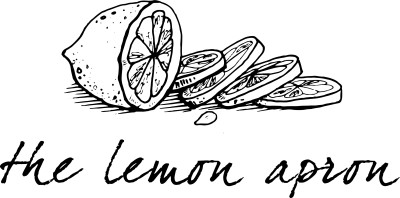
I love Moroccan food and I frequently make it for my family, and sometimes I have adjusted recipes to accommodate cooking with wild game meats. These work especially well because the wonderful aromatic spices do so well covering up any gaminess of some wild meat (like venison or wild foul). This recipe is yet another to add to my repertoire. Thank you.
Hu Christilyn, Yes, you are so right, gamey meats work great with moroccan spices! I often use venison this way. I’m so happy you like the recipe. Have a great week. Love Jen
I’ve made this recipe twice now, and it is delicious. The meat really does fall off the bone, and the preserved lemon adds nice flavour.
Hi Marilena, So happy you like it! Yes, I love all versions of dishes like this, so comforting and tasty. Love Jen